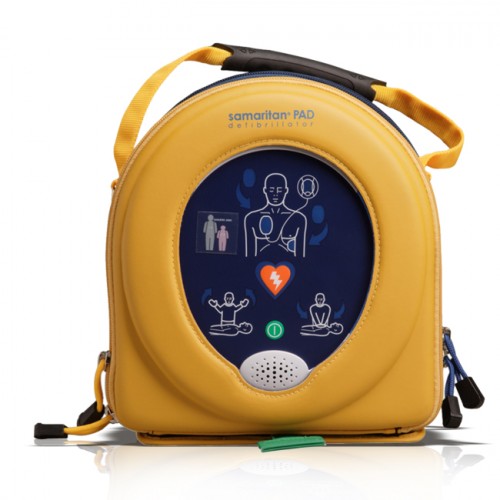What to Do if You Notice a Problem with Your Tackle: Prostate & Testicular Cancer Guide
- Introduction
- Signs and Symptoms of Prostate Cancer
- Signs and Symptoms of Testicular Cancer
- Don’t Do the Dangerous Avoidance Dance
- Make an Appointment That Makes You Comfortable
- Lowdown on Prostate Exams
- Self-Checking for Prostate and Testicular Cancer
- Can You Prevent Prostate and Testicular Cancer?
- Male Cancers in a Nutshell
Introduction
Finding a lump or bump on your testicles, noticing changes "down there," or experiencing trouble when using the bathroom are red flags for men’s reproductive health. These symptoms may point to prostate or testicular cancer.
While prostate cancer is more common overall, testicular cancer is prevalent among younger men. Awareness of symptoms is crucial, but that’s only half the battle. If you’re uncomfortable talking to a doctor about your symptoms, this guide will help you understand the signs, symptoms, and how to talk to your GP, ensuring you don’t delay a potentially life-saving conversation.
Signs and Symptoms of Prostate Cancer
Prostate cancer is the second most common cause of cancer-related deaths in Australian men. Early detection can make a significant difference, which is why understanding and sharing symptoms with your GP is essential.
Prostate cancer often presents no symptoms in its early stages. However, as men age, they may develop urinary symptoms. These symptoms are not always linked to cancer, but it’s still important to speak to your doctor. These include:
- Frequent or urgent need to urinate
- Difficulty starting or stopping urination
- Discomfort or pain while urinating
- Blood in urine or semen
- Pain in the lower back, upper thighs, or hips
Signs and Symptoms of Testicular Cancer
Testicular cancer, while rarer than prostate cancer, is the second most common cancer in young Australian men aged 20 to 39. The average age of diagnosis is 36, so no, you’re not too young to be at risk.
Common symptoms include:
- A painless lump or swelling in either testicle
- Changes in how a testicle feels
- A dull ache in the lower abdomen or groin
- Sudden fluid buildup in the scrotum
- Pain or discomfort in the testicles or scrotum
Don’t Do the Dangerous Avoidance Dance
Men are notorious for avoiding the doctor, but that avoidance can be costly. Early intervention is key to effectively managing many health issues, including cancer. If you notice any changes, don’t delay—talk to your GP. Googling symptoms might lead you to this article, but only a healthcare professional can provide the answers you need.
Pick up the phone. Make the appointment.
Make an Appointment That Makes You Comfortable
When you call to schedule your appointment, you can request a male doctor if that makes you feel more comfortable. However, all GPs are fully trained and capable of addressing your concerns. Choose the doctor you feel you’ll be most honest with.
When you attend your appointment, describe your symptoms in as much detail as possible and be ready for a full check-up, especially if you haven’t visited the GP in a while. This is a great opportunity to check in on your overall health.
Lowdown on Prostate Exams
The simplest way for a GP to check if your prostate is enlarged is through a physical exam. Since the prostate is located just below the bladder, this check is done through the rectum—a procedure that’s the punchline of many jokes, but it’s no joke if it saves your life.
While it may not be fun, it’s quick, and getting it done could give you peace of mind. For more detailed information on prostate exams and other tests, consult the Cancer Council.
Self-Checking for Prostate and Testicular Cancer
Self-checking for signs of prostate and testicular cancer is an important step in early detection. Here’s a guide on how to perform these checks and what to look out for:
How to Perform a Testicular Self-Exam:
- When to check: Perform the self-exam after a warm bath or shower when the scrotal skin is relaxed.
- Stand in front of a mirror: Look for any swelling, lumps, or changes in size or shape.
- Examine each testicle separately: Use both hands to gently roll each testicle between your thumb and fingers. Apply gentle pressure.
- Normal feel: Testicles should feel smooth and firm with no lumps or abnormalities. One testicle may be slightly larger than the other, which is normal.
- Feel for lumps: Check for any lumps or nodules, which may be as small as a grain of rice or larger. These could be painless or cause slight discomfort.
- Check the epididymis: Located at the back of each testicle, this soft, tube-like structure may feel a bit lumpy, but it’s normal.
What to Look Out For:
- A painless lump or swelling in either testicle
- Any change in size, shape, or consistency of the testicle
- A dull ache in the lower abdomen or groin
- Sudden fluid buildup in the scrotum
- Pain or discomfort in the testicles or scrotum
If you notice any of these symptoms, schedule an appointment with your GP immediately.
Can You Prevent Prostate and Testicular Cancer?
Not all cases of prostate and testicular cancer are preventable, but there are lifestyle changes that can reduce your risk.
Adopting a healthy lifestyle, including a balanced diet, regular exercise, and stress management, benefits overall health and may lower the risk of some cancers. Research suggests that consuming processed meats like ham or salami could increase the likelihood of prostate cancer, so if you’re concerned, have a chat with your doctor.
Family history is also key. If your father or brother has had prostate cancer, your risk is higher. The more family members with a history of prostate cancer, the greater your risk. Keeping your doctor informed helps create a screening plan tailored to you.
Male Cancers in a Nutshell
While men’s reproductive systems may seem “low-maintenance” compared to women’s, that doesn’t mean they don’t require care. Ignoring symptoms or adopting a “she’ll be right” attitude could lead to bigger problems down the track.
If you notice any changes or experience any of the symptoms listed above, don’t hesitate—book an appointment with your GP. Your doctor has seen it all before and prefers patients who come in early for proactive care.







